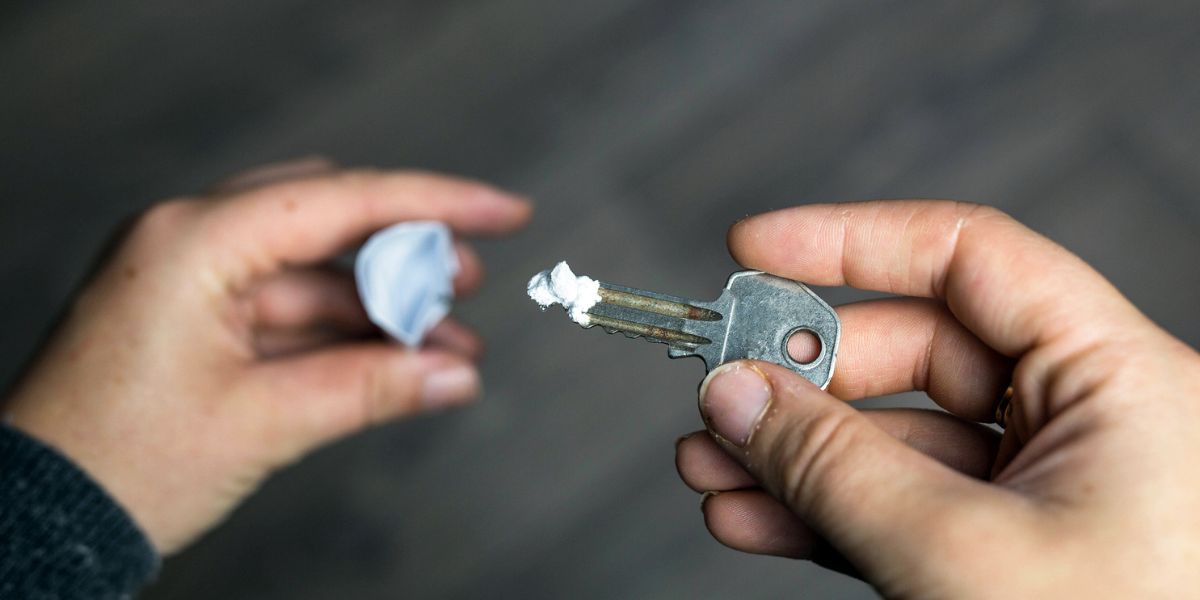Cocaine Nose: Effects of Snorting Coke


Media representations often play down cocaine use, depicting people as merely sniffling and dismissing it as “cocaine nose.” Coke can cause nasal discharge and lead to severe cosmetic changes, intense pain, addiction, and potentially deadly infections.
In the United States, the scale of cocaine consumption is alarming, with up to 30 million adults indulging annually. Around six million people have a problem with cocaine addiction and need help from experts to overcome it. Moreover, for those suffering from acute cocaine nose, reconstructive surgery becomes a necessity.
Cocaine Nose, or Coke Nose
“Cocaine nose,” or “coke nose,” includes a spectrum of nasal and sinus injuries resulting from cocaine snorting. The harm can range from nosebleeds to serious damage, sometimes needing plastic surgery to fix.
Snorting cocaine can cause long-term nose problems, such as chronic rhinitis, as stated by the National Library of Medicine. This condition triggers inflammation in the sinonasal mucosa, gradually deteriorating the nasal, palatal, and pharyngeal tissues.
Using cocaine causes harm to your nose, sinuses, upper part of the mouth, and throat.
What Does Cocaine Do to Your Nose?
In simple terms, cocaine deteriorates the nose. The powder form of cocaine is harsh on the nasal lining’s mucus membranes.
Tiny cuts from the drug and its additives enable fast absorption into the bloodstream. The close proximity of the nasal cavities to the brain means the effects are felt swiftly.
Coke narrows the nose’s blood vessels, limiting blood circulation and harming the nasal lining.
According to the NIDA, or National Institutes on Drug Abuse, short-term abuse of coke can lead to nasal congestion, discharge, nosebleeds, sinus infections, and sore throat.
Long-term cocaine use can harm the nose. This can cause tissue and cartilage decay. The damage is due to poor blood flow and infections.

Long-Term Effects of Cocaine
Long-term cocaine use leads to a range of side effects and health hazards. Users who cannot access powdered cocaine may resort to smoking crack. Both smoking and injecting coke heighten the likelihood of infections and exacerbate long-term damage.
Prolonged cocaine use can result in numerous adverse effects, including:
- Paranoia
- Anxiety
- Runny nose
- Depressed mood
- Diminished sense of smell
- Injury to soft nasal tissues, oral, and facial region
- Neurological damage
- Sleeplessness
- Respiratory infections
- Lung impairment
- Kidney impairment
- Liver impairment
- Heart impairment
- Stroke risk
- Sexual dysfunction
- Infection at injection sites
- Vein collapse
- Dental decay
- Periodontal disease
- Nasal collapse
- Intestinal decay
- Risk of brain aneurysm
- Heart attack risk
- Withdrawal symptoms
People with mental health conditions face a heightened risk of developing cocaine-induced psychosis, leading to troubling and aggressive thoughts and behaviors.
Cocaine Nose Damage
Most of the nasal damage due to cocaine abuse is directly from extended misuse, but even those who binge or snort large amounts in brief periods can inflict harm. While some nasal issues from coke abuse may resolve independently with cessation, others need medical treatment and plastic surgery.
Cocaine Nose Bleeds
Cocaine constricts blood vessels in the nose, increasing their susceptibility to injury through rubbing, itching, or bumping. It also dehydrates the mucus membranes, leading to cracks or sores that bleed. Normalized blood flow can cause these vessels to burst, resulting in nosebleeds. Commonly, people use a straw, rolled-up currency, paper, or a key for snorting cocaine, all of which can scratch and further harm the nasal lining.
Stopping nosebleeds caused by cocaine can be challenging, as the affected tissue heals and clots more slowly. In severe situations, frequent nosebleeds might require medical intervention to cauterize the sinus blood vessels; however, this is often deemed futile for active cocaine users, given the recurrent tissue damage.
Cocaine Sinus Infections
Nasal mucus plays a crucial role in trapping and eliminating bacteria and irritants, thus preventing them from invading the body and leading to infections. Snorting coke dehydrates this mucus, making it easier for germs and pollutants to infiltrate the nasal passages.
Sinus infections feel bad and can upset you. They might let germs get into your blood. This can cause sepsis, a hazardous health problem.
Antibiotics can treat most sinus infections. As time goes on, antibiotics lose their effectiveness and the chance of severe infection complications rises.
Saddle Nose Deformity
The septum or bridge, cartilage running down the middle, gives the nose its structure. Chronic cocaine use can lead to diminished blood flow, decay, and collapse of this tissue, resulting in a flattened or indented area known as saddle nose.
Plastic surgeons often mend a saddle nose using an implant or by grafting cartilage from the individual’s pelvic bone or ribs to the face. Since saddle nose is mainly a cosmetic issue, it is often not covered by many insurance plans, making the reconstructive procedure both painful and costly.
Septal Perforation
Septal perforation, or a hole in the nose, happens when the part dividing the nose does not get enough blood. This makes it break down, leading to holes in the nose area.
There’s a misconception that coke burns through the tissue; however, while it is somewhat acidic, it cannot burn holes directly. Cocaine’s damage is cumulative, impacting the immune system and delaying the healing process. Septal perforation can cause nosebleeds, disrupt mucus regulation, and lead to breathing difficulties, often accompanied by a whistling sound.
Early detection of septal perforations allows for treatment with lubricating gels and medications. More severe cases, however, may necessitate surgical intervention.
Damaged Nasal Septum
A deviated septum, or a damaged nasal septum, happens when one side of the nose is more damaged than the other, causing the nasal septum to tilt to one side. This condition alters the nose’s shape and obstructs airflow, resulting in headaches, sinus pressure, snoring, and a higher frequency of sinus infections.
Reconstructive surgery is an option that doctors can use to correct a deviated septum.
Hard Palate Damage
Hard palate damage is among the most severe consequences of chronic cocaine abuse. The hard palate is the roof of the mouth. It separates the nose from the mouth. Constant damage and infections can cause holes to develop in the hard palate.
Damage to the hard palate can cause food and drink to travel from the mouth to the nose. This can change the sound of your voice and make dental infections and tooth loss more likely. Repairing hard palate damage is not always possible; when feasible, it involves extensive reconstructive surgery or dental implants
Doctors usually do not perform reconstructive procedures on people who are currently using cocaine. They typically ask patients to finish a coke addiction treatment program before they will consider surgery.

Cocaine Addiction Treatment at White Oak Recovery Center
If you or someone you know needs help with cocaine addiction, we are here to help.
At White Oak Recovery Center, we make unique treatment plans for each person, caring for your comfort, respect, and privacy.
We provide complete addiction care, including medical detox, medication-assisted treatment, dual diagnosis, and healthy chef-catered meals. This ensures the right balance of overall well-being to start healing from the grip of substance use. Our caring and experienced team works to find and treat the real reasons for addiction using tested, evidence-based practices.
We want to help you or your loved one find a healthy, lasting way to recover. Call us today to start your recovery journey.

Am I covered for addiction treatment?
Your insurance may cover treatment. Call now for an entirely free and confidential assessment. Recovery starts with a phone call.

- Molteni, Marco, et al., “Snorting the Clivus Away: An Extreme Case of Cocaine-Induced Midline Destructive Lesion. “BMJ Case Report, Oct. 2016.
- Cregler, L.L., “Adverse Health Consequences of Cocaine Abuse.” Journal of National Medical Association, Jan. 1989.
- Guyuron, Bahman, et al., “Correction of Cocaine-Related Nasal Defects.” Plastic Reconstr Surg., Mar. 2008.
- Fernandez, Graciela Blanco, et al., “Case for Diagnosis: Palate Perforation Due to Cocaine Use.” An Bras Dermatol., Dec. 2017.
- Millard, D.R., et al., “Reconstruction of the Nose Damaged by Cocaine.” Plast Reconstr Surg., Feb. 2011.
Medical Disclaimer:







